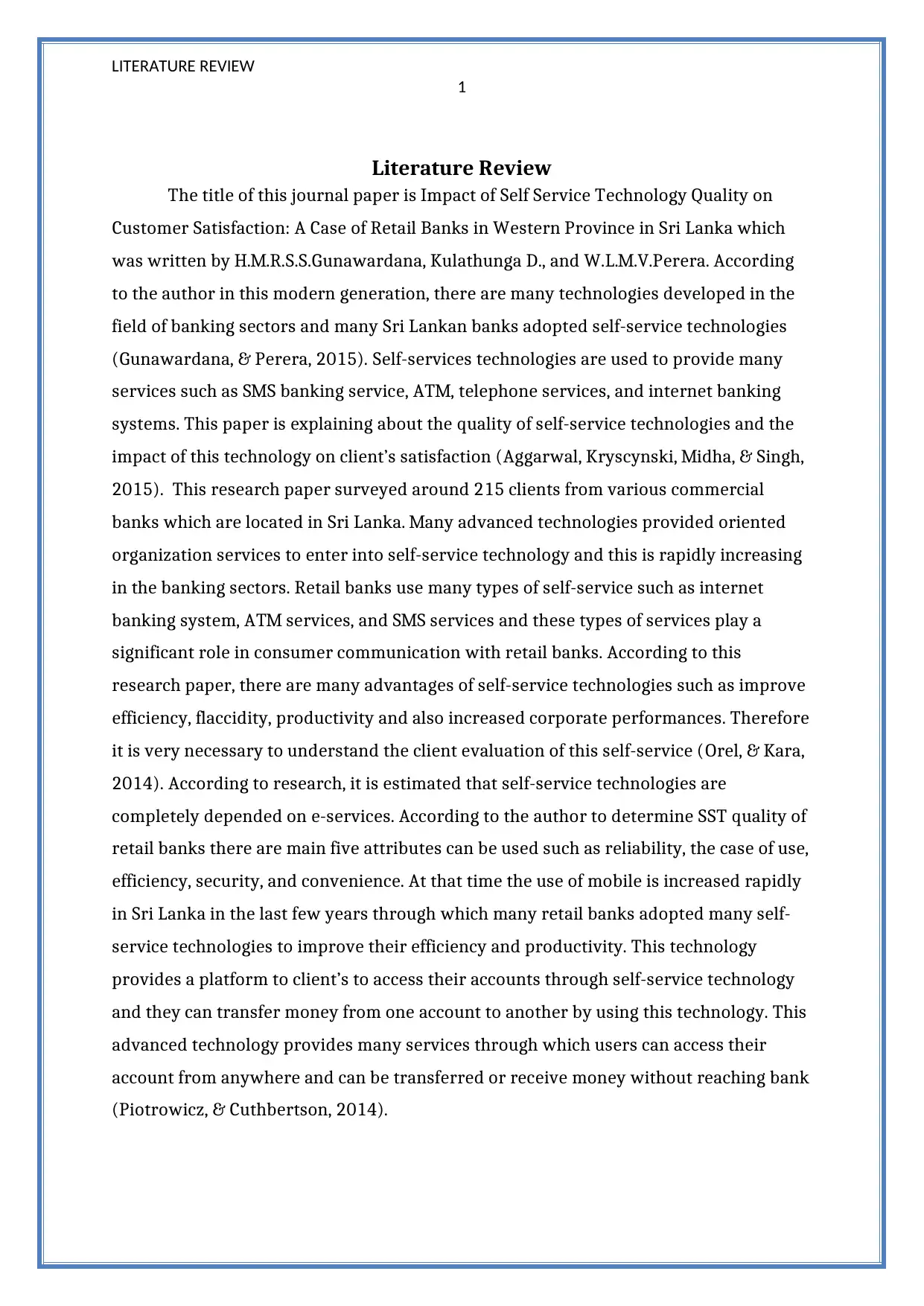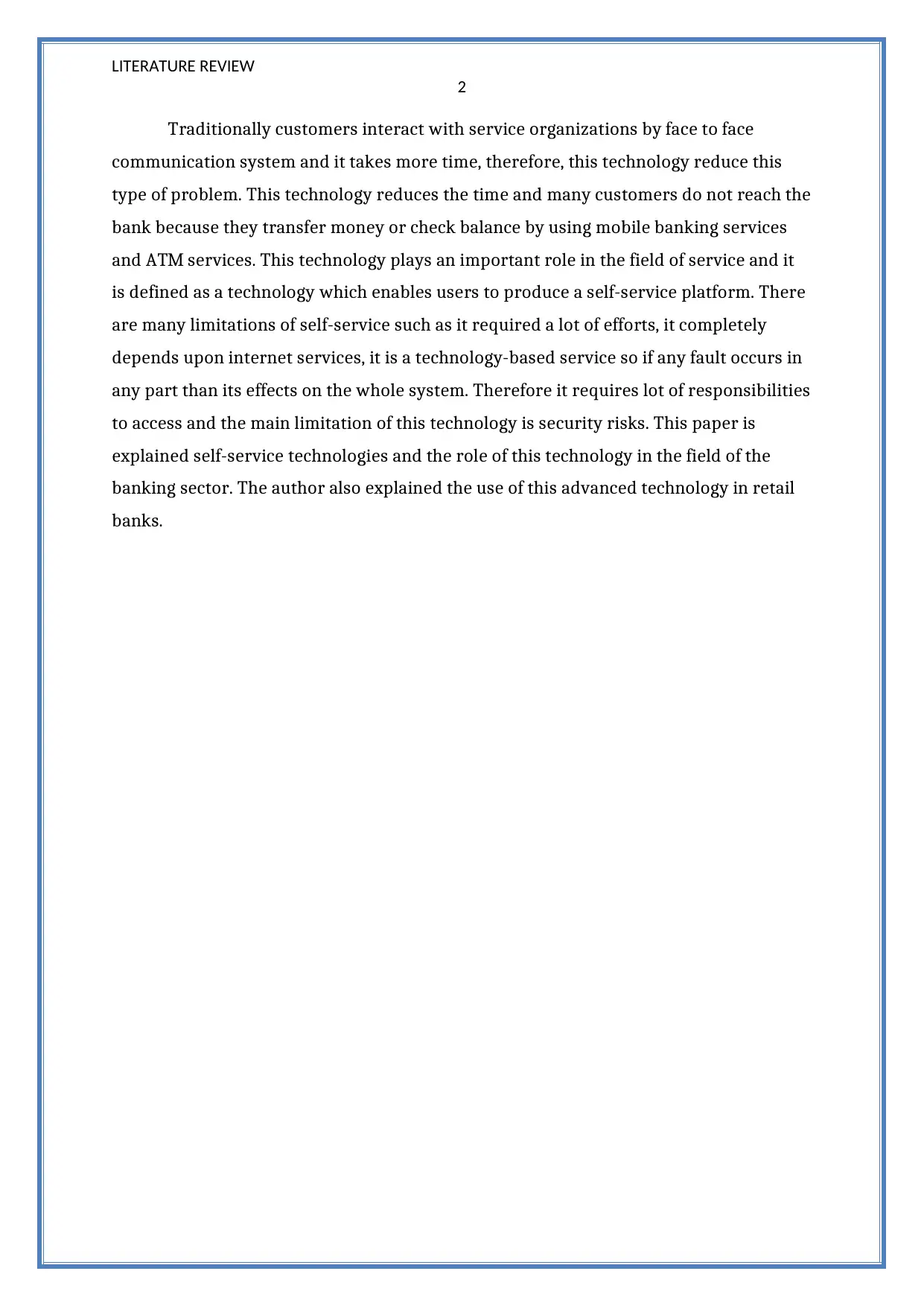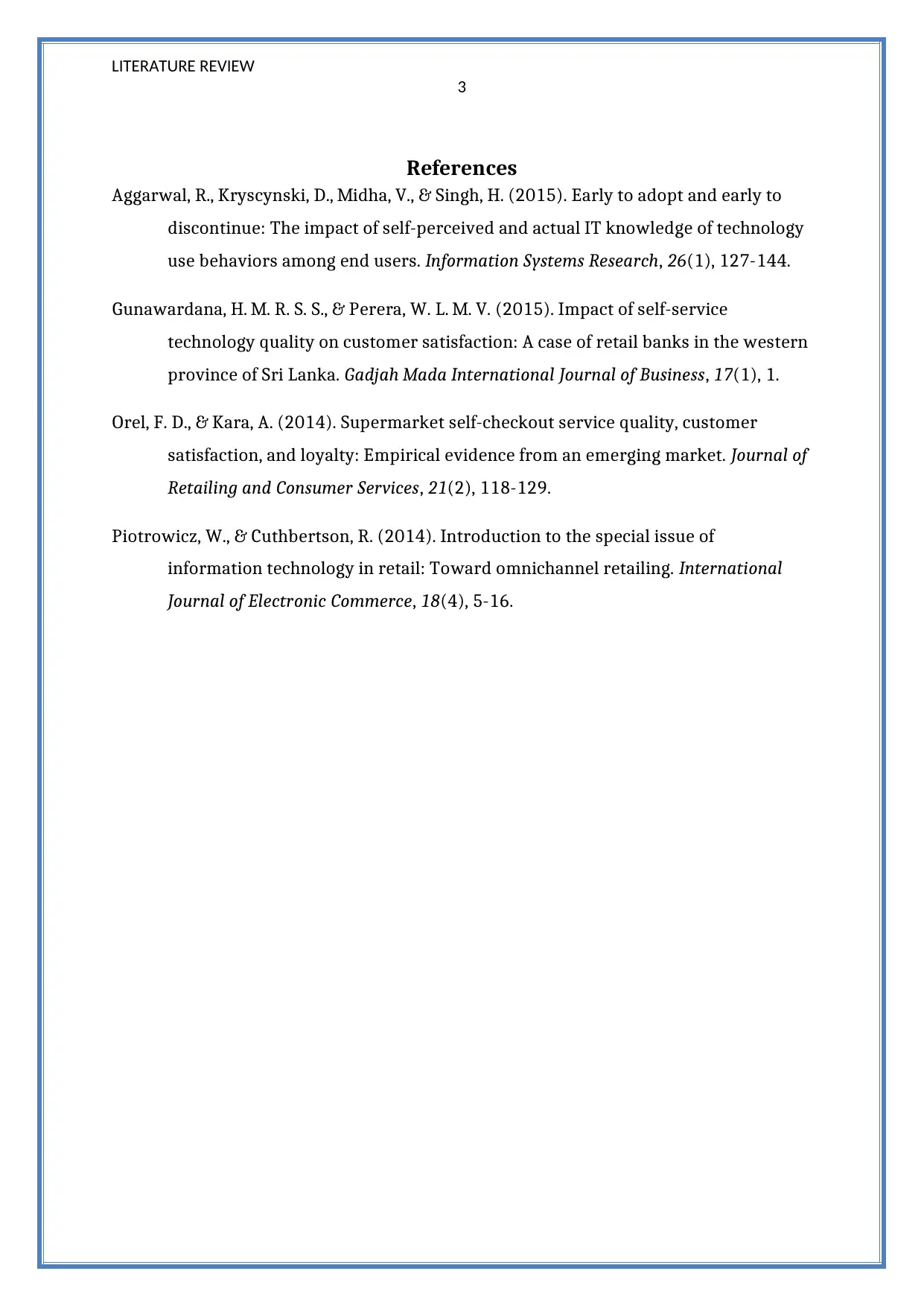Literature Review: Impact of SST Quality on Customer Satisfaction
VerifiedAdded on 2023/06/10
|4
|805
|78
Literature Review
AI Summary
This literature review, based on a journal paper by Gunawardana, Kulathunga, and Perera, examines the impact of self-service technology (SST) quality on customer satisfaction in retail banks in the Western Province of Sri Lanka. The paper discusses the increasing adoption of SST like SMS banking, ATMs, and internet banking by Sri Lankan banks. It highlights the advantages of SST, including improved efficiency and productivity, and emphasizes the importance of understanding customer evaluations of these technologies. The review identifies key attributes of SST quality, such as reliability, ease of use, efficiency, security, and convenience. It also acknowledges the limitations of SST, including reliance on internet services and potential security risks. The research surveyed 215 customers and found that SST plays a significant role in consumer communication, with the use of mobile technology increasing rapidly. The paper references related research on SST and customer satisfaction in the banking sector.
1 out of 4










![[object Object]](/_next/static/media/star-bottom.7253800d.svg)